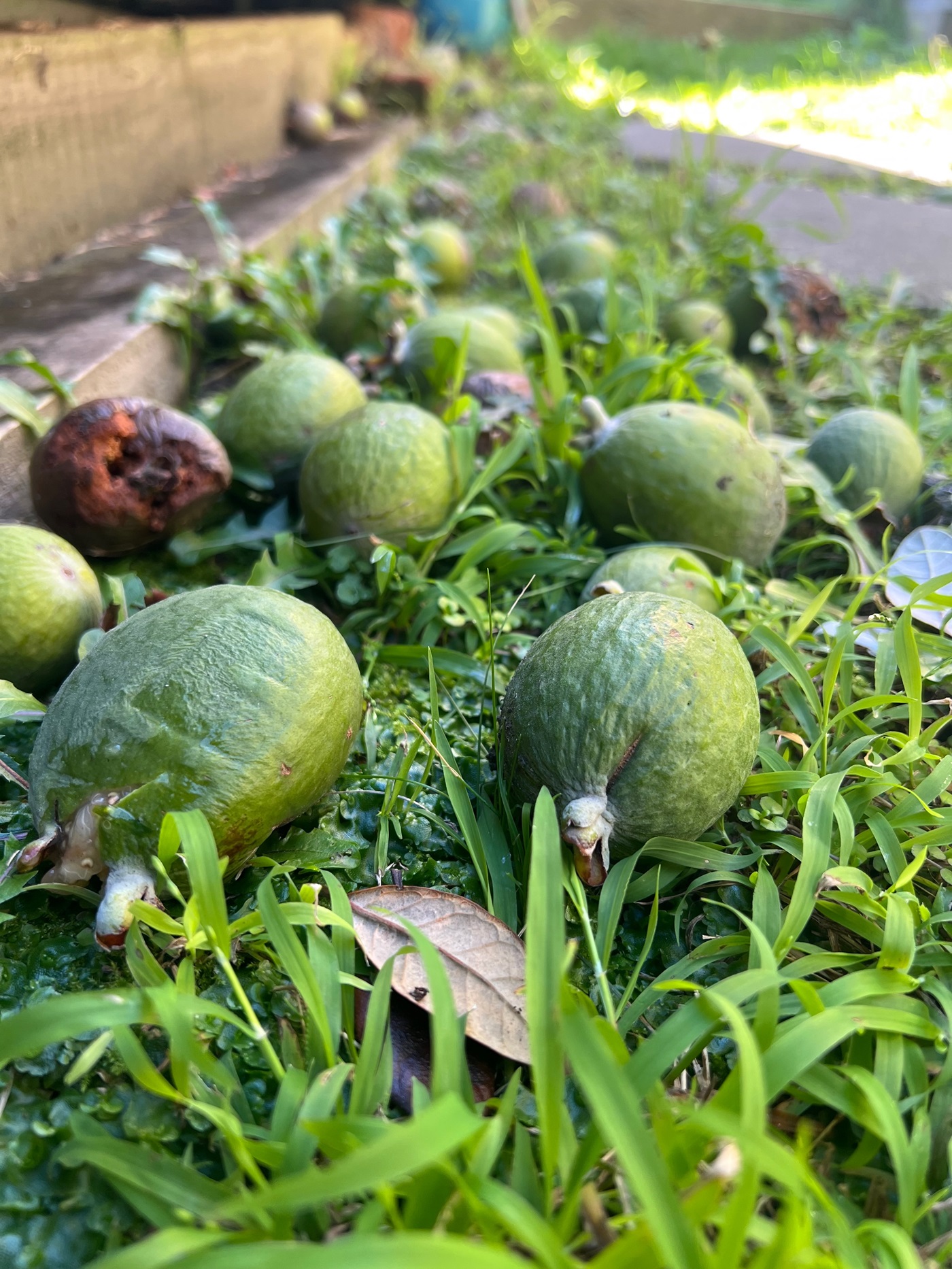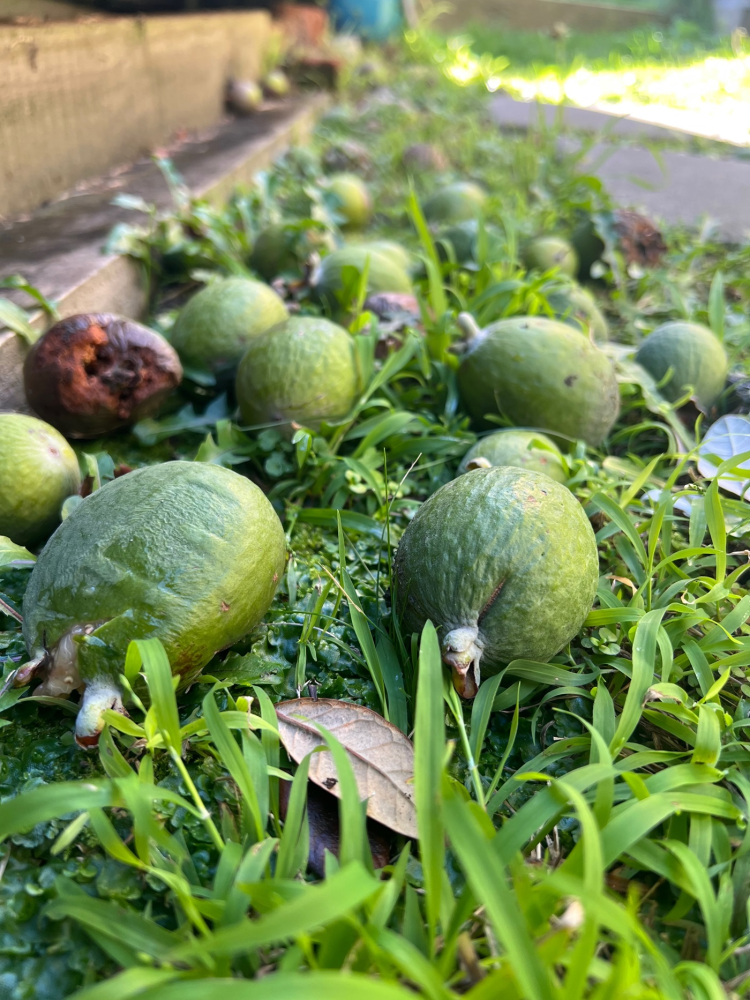
When life give you lemons, make lemonade. If your backyard is full of feijoas, write a column about it, says Jane O’Loughlin.
Feijoas. Some people like them, others of us think they are strange smelling, with slimy insides, and weirdly overrated.
 Nevertheless, they are in abundance. Mt Victoria seems to be a micro climate where feijoas like to grow, and thus we find them in many a back yard.
Nevertheless, they are in abundance. Mt Victoria seems to be a micro climate where feijoas like to grow, and thus we find them in many a back yard.
In our case, our neighbour’s tree hangs over our backyard and as we are too lazy to trim it, come autumn we have a profusion of feijoas on our lawn.
Indeed, when I go out to put out the washing, the back lawn is a veritable minefield of squishy feijoas, that I need to dodge or squelch my way across.
Mowing the lawn risks creating some kind of vile smoothie, unless you are prepared to go around gathering them up and putting them in piles to rot.
Feijoas - what are they good for? Eating, obviously, if you like a strange sour gritty fruit that makes your eyes water.
Faced with a massive bounty, people will try and find things to do with them – jams, chutneys, muffins, etc, but whilst they may produce palatable results, you are still left with the nagging feeling that the product would be ten times better with a properly delicious fruit like a raspberry involved.
Some jam-makers even go so far as to include feijoa skins as well, achieving the goal of no waste (commendable) but resulting in a mud-coloured jam (urgh).
To avoid this column becoming an unbalanced rant against an innocent fruit, I asked my fellow home dwellers for their thoughts. “A very versatile fruit!” said my partner who inexplicably actually likes them.
When I demanded more details of these uses, he came up with a limited list that comprised of jams, muffins, and eating ‘as is’ before in desperation deciding that one of their attributes was that they are aerodynamically shaped and therefore good for throwing.
This gave me an idea. Perhaps we could stage a kind of Mt Victoria version of la tomatina, where we chuck feijoas at each other every autumn, resulting in some visitor-friendly quaint festival where we all end up happily coated in feijoa pulp. But alas the feijoa is a hard kind of fruit, with spiky bits on it. Not suited to a family friendly festival; more like a chance to seriously cause some harm. Once again the feijoa disappoints.
Feijoas seem to be quite a polarising fruit. Those oddballs in my family who like them also despise coriander, so I can’t help thinking it’s a genetic fault.
Speaking of its back history, I also discovered that feijoas originated in South America. This means, according to YouTube, the word comes from Brazil and is correctly pronounced in the Portuguese way ‘fay-joh-a’.
I do notice that there are four vowels in feijoa, so that’s worth bearing in mind if you are playing Scrabble and end up with a pile of vowels. Paired with the valuable J and F you would get a decent 16 points.
Finally I have found a use for the feijoa.
OTHER STORIES




